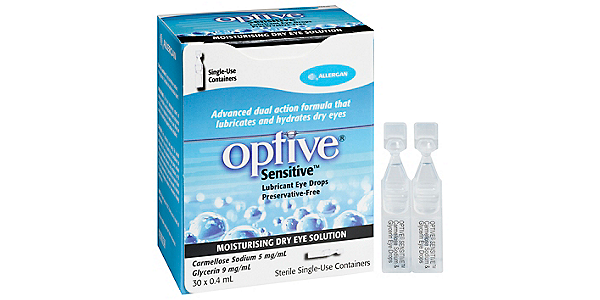[tintuc]
 |
| Hylo Confort, Ursapharm - Ảnh Internet chỉ mang tính chất minh họa |
 |
Optive, Allergan - Ảnh Internet chỉ mang tính chất minh họa
|
 |
| Ảnh Internet chỉ mang tính chất minh họa |
Comparison of two types of eye drops, one
containing hyaluronic acid and the other containing carboxymethylcellulose, in
patients with moderate dry eye disease showed efficacy of both products.
The study was carried out in 10 centers in
France and included 80 patients with moderate dry eye disease and nonviral
keratoconjunctivitis or keratitis divided into two groups. One group received a
sterile preservative-free solution containing 0.1% hyaluronic acid (Hylo
Confort, Ursapharm) and the other received a sterile solution containing 0.5%
carboxymethylcellulose (Optive, Allergan). Instillation for both groups was
three times daily.
Of the two components of moisturizing eye
drops, the authors wrote, “HA has excellent moisturizing and mucus-layer
adhesive properties and is found in the physiological tear fluid. CMC is an
anionic cellulose derivate, provides excellent bioadhesive characteristics, and
increases tear-retention time.”
Primary endpoint was change in ocular surface
as seen on lissamine green and fluorescein staining between baseline and day
35. Secondary measures at day 84 were ocular surface staining score, tear
breakup time (TBUT) and subjective symptoms of dryness, grittiness, stinging,
fatigue, pain and itching by the Ocular Comfort Index (OCI) questionnaire.
On day 35, staining was reduced by 47.7% in
the hyaluronic acid group and by 41.2% in the carboxymethylcellulose group.
Progressive decrease was observed up to day 84, reaching 64.5% in the
hyaluronic acid group and 56.4% in the carboxymethylcellulose group compared
with baseline. TBUT values slightly improved in both groups. OCI scores showed
reduction of all symptoms.
“Treatment of [dry eye disease] with 0.1% HA
or 0.5% CMC eye drops is efficacious and safe in patients with moderate DED,
with a more favorable trend for 0.1% HA eye drops,” the authors concluded.
– by Michela Cimberle
Disclosure: Gross reports she is an employee of Ursapharm.
Please see the study for the other authors’ financial disclosures.
Nguồn bài viết
https://www.healio.com/ophthalmology/cornea-external-disease/news/online/%7Beac8107e-2636-45fc-b2bb-295b9b2471ae%7D/two-dry-eye-drop-formulations-compared
[/tintuc]












Không có nhận xét nào :
Đăng nhận xét